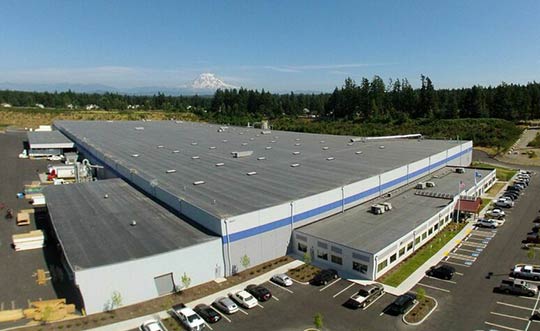|
A recent series of Advanced Energy Retrofit Guides (AERGs) published by the Pacific Northwest National Laboratory in Richland, Washington and the Portland Energy Conservation in Portland, Oregon examines the energy-efficient options available for roof retrofit projects.
These AERGs give a special warning regarding the use of cool roofs in cold climates like Washington or Minnesota. The guides show that cool roofs can provide a net annual energy savings in buildings located in climates with long cooling seasons and short heating seasons, like Miami. But in heating-dominated climates like Seattle or Minneapolis, cool roofs will likely incur a significant heating penalty.
 |
|
A black EPDM roofing system is the more energy-efficient choice for this building in Puyallup, Washington.
|
The “AERG for Retail Buildings” and the “AERG for Office Buildings” indicate that these two types of structures account for 30 percent of all energy use in commercial buildings. To reduce energy usage and increase efficiency, the AERGs recommend taking certain measures on every project, regardless of a building’s location and its climatic conditions. These energy efficiency measures, which are more universally effective than installing a cool roof, include:
- Making changes to the HVAC system
- Making changes to internal lighting
- Adding insulation to the walls and roof
- Taking steps to ensure the building is properly sealed
Read a complete AERG summary.
With the integration of energy efficiency and sustainability into building design, it is important to understand that climate and building use play a large role in determining what is cost-effective and what will reduce natural resource consumption for the operation of our buildings. For more information, contact Ron Goodman at Ron.Goodman@CarlisleSynTec.com.
|
